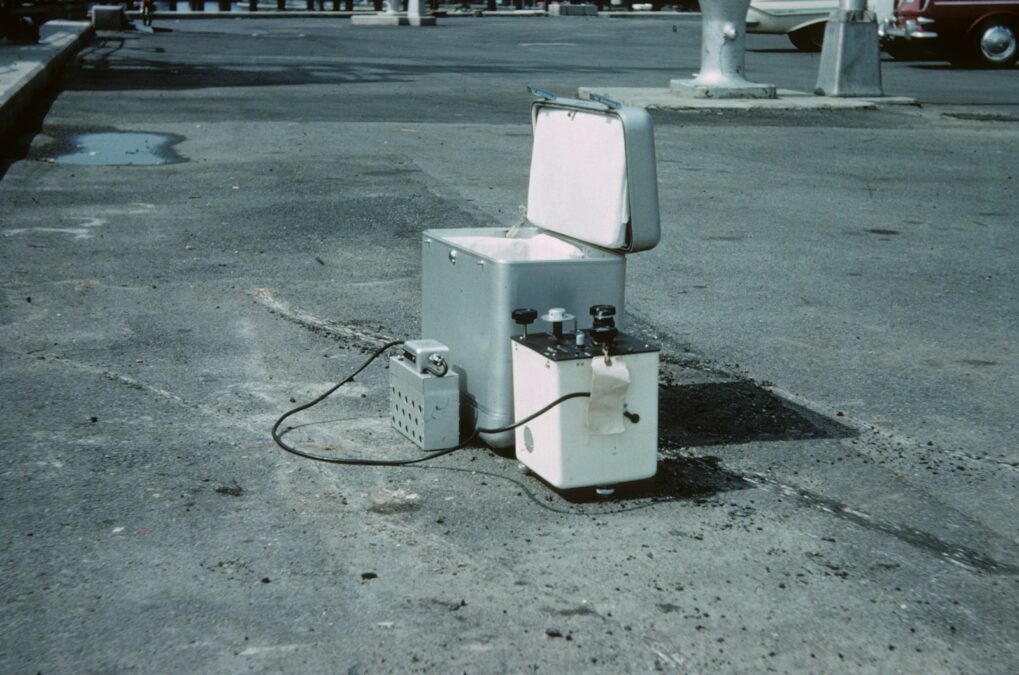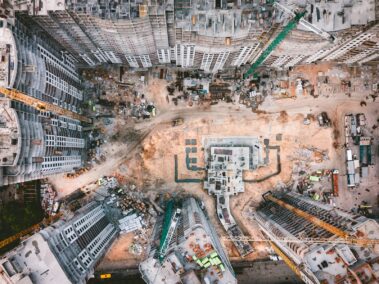The Role of Environmental Monitoring Systems in Modern Technology
Introduction to Environmental Monitoring Systems
Environmental monitoring systems use advanced technologies, such as sensors, remote sensing, and data analytics, to collect and analyze data on various environmental parameters. These systems are essential for understanding and managing the impacts of human activities on the environment, ensuring sustainable development, and improving public health. In rapidly developing regions like Saudi Arabia and the UAE, particularly in cities such as Riyadh and Dubai, the adoption of environmental monitoring systems is crucial for promoting sustainability and enhancing the quality of life.
The core components of environmental monitoring systems include sensors that detect and measure environmental parameters, remote sensing technologies that provide comprehensive data on large areas, and data analytics tools that process and interpret the collected data. By integrating these components, environmental monitoring systems can provide real-time insights into environmental conditions, enabling informed decision-making and effective management of natural resources.
In Saudi Arabia and the UAE, environmental monitoring systems align with national sustainability goals, such as Saudi Vision 2030 and the UAE Green Growth Strategy. These initiatives emphasize the importance of adopting innovative technologies to monitor and protect the environment, conserve natural resources, and promote environmental stewardship. By investing in environmental monitoring technologies, these countries can lead the way in sustainable urban development and set an example for other nations to follow.
The Role of Sensors and Remote Sensing in Environmental Monitoring
Sensors and remote sensing technologies are integral to the functionality of environmental monitoring systems. Sensors are devices that detect and measure specific environmental parameters, such as air quality, water quality, temperature, humidity, and radiation levels. These sensors can be deployed in various locations to provide continuous and accurate data on environmental conditions.
Remote sensing technologies, such as satellite imagery and aerial drones, provide comprehensive data on large areas, enabling the monitoring of environmental changes over time. These technologies can capture high-resolution images and data that can be used to assess land use, vegetation cover, water bodies, and urban development. In cities like Riyadh and Dubai, remote sensing technologies are used to monitor air quality, detect illegal landfills, track deforestation, and assess the impacts of urbanization on natural habitats.
The integration of sensors and remote sensing technologies in environmental monitoring systems enhances the accuracy and reliability of environmental data. By providing real-time and comprehensive insights into environmental conditions, these technologies enable governments, businesses, and communities to make informed decisions that promote sustainability and protect public health. In Saudi Arabia and the UAE, the use of sensors and remote sensing technologies in environmental monitoring aligns with broader sustainability goals and supports the development of smart cities and sustainable infrastructure.
The Impact of Data Analytics and AI on Environmental Monitoring
Data analytics and artificial intelligence (AI) play a crucial role in processing and interpreting the vast amounts of data collected by environmental monitoring systems. Data analytics tools can analyze large datasets to identify trends, patterns, and anomalies, providing valuable insights into environmental conditions. AI algorithms can enhance the accuracy and efficiency of data analysis, enabling predictive modeling and automated decision-making.
In cities like Riyadh and Dubai, data analytics and AI are used to monitor air quality, predict weather patterns, and assess the impacts of climate change. AI-driven predictive models can forecast environmental changes and identify potential risks, enabling proactive measures to mitigate negative impacts. For example, AI algorithms can predict the occurrence of extreme weather events, such as floods and heatwaves, allowing authorities to take preventive actions and protect vulnerable communities.
The integration of data analytics and AI in environmental monitoring systems enhances the effectiveness of environmental management and decision-making. By providing real-time and accurate insights into environmental conditions, these technologies enable governments, businesses, and communities to respond quickly to environmental challenges and promote sustainability. In Saudi Arabia and the UAE, the use of data analytics and AI in environmental monitoring supports national sustainability goals and fosters innovation in environmental management.
Leadership and Strategic Implementation of Environmental Monitoring Systems
Effective Leadership in Environmental Monitoring Projects
Effective leadership is crucial for the successful implementation of environmental monitoring systems. Business executives, mid-level managers, and entrepreneurs in Saudi Arabia and the UAE must navigate the complexities of these technologies to ensure successful project outcomes. Executive coaching services and management consulting can play a significant role in developing the necessary skills and strategies for effective leadership in environmental monitoring projects.
Executive coaching helps leaders enhance their communication and decision-making skills, enabling them to effectively coordinate with various stakeholders, including technology vendors, regulatory bodies, and project teams. By fostering a culture of collaboration and innovation, leaders can ensure that all parties are aligned and working towards a common goal. In dynamic business environments like Riyadh and Dubai, effective communication is essential for overcoming the technical and logistical challenges associated with implementing environmental monitoring systems.
Project management is another critical aspect of environmental monitoring projects. Managers must oversee the integration and maintenance of advanced technologies, coordinate with multiple teams, and ensure that projects are completed on time and within budget. By leveraging advanced project management techniques and tools, managers can enhance operational efficiency and improve overall project outcomes. The integration of AI and generative artificial intelligence into project management further enhances decision-making and resource allocation, ensuring that environmental monitoring projects are executed seamlessly.
Strategic Investment in Environmental Monitoring Technologies
Strategic investment in environmental monitoring technologies is essential for achieving long-term environmental and economic benefits. Saudi Arabia and the UAE are exemplifying this leadership through their commitment to sustainable development and environmental stewardship. By investing in environmental monitoring technologies, these countries can reduce their environmental impact, promote resource efficiency, and enhance the quality of urban living.
In Riyadh and Dubai, strategic investment in environmental monitoring technologies aligns with broader sustainability goals and national strategies. These investments support the development of smart cities, reduce dependence on non-renewable resources, and enhance environmental resilience. By fostering a culture of innovation and technological advancement, these cities can attract investment, create jobs, and stimulate economic growth.
Furthermore, strategic investment in environmental monitoring technologies can enhance the global competitiveness of Saudi Arabia and the UAE. By positioning themselves as leaders in the adoption of advanced environmental monitoring systems, these countries can attract international partnerships and collaborations, driving further advancements in the field. The integration of modern technologies such as AI, blockchain, and the metaverse in environmental monitoring projects can also enhance the efficiency and reliability of these systems, making them more attractive investments for public and private stakeholders.
Conclusion: Embracing Innovation in Environmental Monitoring
Continuous innovation and investment in environmental monitoring systems are essential for achieving global sustainability targets and addressing the challenges of climate change. By leveraging advanced technologies such as artificial intelligence, blockchain, and the metaverse, countries like Saudi Arabia and the UAE can drive further advancements in environmental monitoring and position themselves as leaders in the global push for environmental sustainability.
Effective leadership and management are crucial for navigating the complexities of implementing environmental monitoring systems. Business executives, mid-level managers, and entrepreneurs in Riyadh and Dubai must develop the skills and strategies needed to lead their organizations through the transition to advanced environmental monitoring. By fostering a culture of collaboration and innovation, leaders can ensure that their organizations are well-positioned to capitalize on the opportunities presented by environmental monitoring technologies.
In conclusion, the integration of advanced technologies in environmental monitoring systems is crucial for unlocking the full potential of modern environmental management. By embracing these innovations, businesses in Saudi Arabia and the UAE can position themselves at the forefront of technological advancement, driving economic growth and maintaining a competitive edge. The future of environmental monitoring is here, and advanced technologies are the key enablers of this transformation.
#EnvironmentalMonitoringSystems #AdvancedTechnologies #Sensors #RemoteSensing #DataAnalytics #SaudiArabia #UAE #Riyadh #Dubai #ArtificialIntelligence #Blockchain #TheMetaverse #GenerativeAI #LeadershipSkills #ManagementSkills #ProjectManagement























